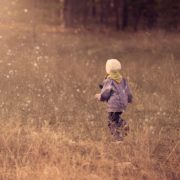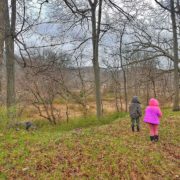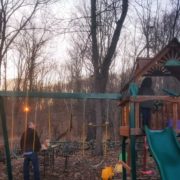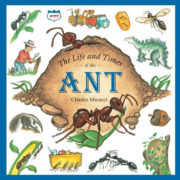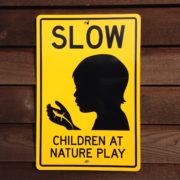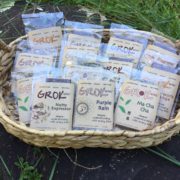
Photograph Courtesy of family+footprints.
There is something beautiful and powerful about watching a child explore a natural setting. Forget about expectation, about having a plan. Kids rarely go outdoors seeking to discover or create or even come away with any feelings those actions impart. But sure enough, those things happen. They happen without any direction needed. These elements often just come out of the experience, as it is, well, a natural part of being in nature.
As adults we have the unique opportunity to approach nature like a child - on our own or along with our children - while also having the introspection of an adult. When we go outdoors, we have the chance to leave expectation behind, to forget about planning an activity, to wander, to discover, to be surprised, and to let the experience take us where it will. Imagine how different your outdoor experiences might be if you just went into the woods to see what might happen. No agenda, just curiosity.
In exploring, we as adults also have the presence of mind to reflect on what we experience. We recognize that learning happens right in front of us, that memories form as we live, and that happiness lies somewhere in the middle of enjoying our surroundings and the people with whom we share that space. We can be surprised by this world, but understand and process far more than our children just how special those experiences are.
So, if you're interested in challenging yourself to approach nature like a child, here are some tips to test out:
01. Forget Expectation
Pick your place and start walking. Enter nature free of expectation for what the experience might involve. Instead, just let yourself be in your setting, open to what you find and how it makes you feel.
02. Use Each of Your Senses
Being in nature is a full sensory experience. Of course we think of all we'll see and hear and feel, but don't forget about what we can smell and what we can (safely) taste. There's a chance to enjoy many layers of the outdoors, when we follow each of our senses.
03. Explore Hidden Places
See something interesting? Move closer. Curious about what is off the beaten path? Explore it. The woods is full of hidden nooks and crannies, each with their own mini eco-system, and each with a new potential experience.
04. Focus on the Details
As children explore, they pick things up, they get down close, they take in the details of whatever has been found. Take a moment to notice details of your own. What things were you missing when you looked by quickly?
05. Go Slowly
Wander, slowly. Explore, slowly, Breathe, slowly. Maybe you forget about getting from one destination to another in the outdoors, instead just stopping off at a spot and taking it in. But even going far can be done slowly. Experiences feel varied when we move at different paces. Test out slower, deeper experiences.
There are times when children explore nature as adults, and they get exciting new takeaways from the experience. Just imagine the possibilities for you and your family, as you take on the role of a child in how you explore the outdoors together.
Related Posts
5 Benefits of an Outdoor Play Community




